How the National Grid works
The following graphics explain how the different parts of UK electricity grid works and UK distribution voltages. The full diagram is available at the bottom of the page.
National Grid power sources
Electricity is generally generated and fed into the National grid in alternating current (AC), typically at 275 or 400 kilovolts (kV), via step-up transformers.
In the UK our electricity comes from a range of sources and the exact mix varies on a daily basis. The main sources are gas fired power stations, wind turbines, nuclear power stations, biomas, coal, solar, imports, hydro and storage. See monthly reports of the UK energy mix.
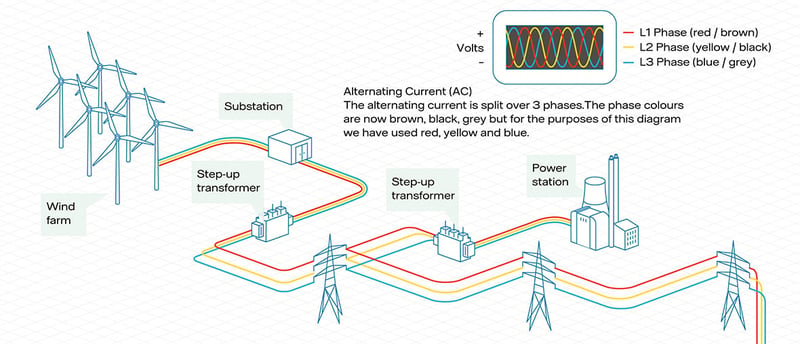
National transmission network
The national transmission network operates at extra high voltages (EHV) of 275 or 400 kilovolts (kV) and is managed by National Grid.
Large solar farms generate Direct Current which is also fed into the national transmission network.
Interconnectors with European countries link the transmission networks together via High Voltage Direct Current (HVDC).
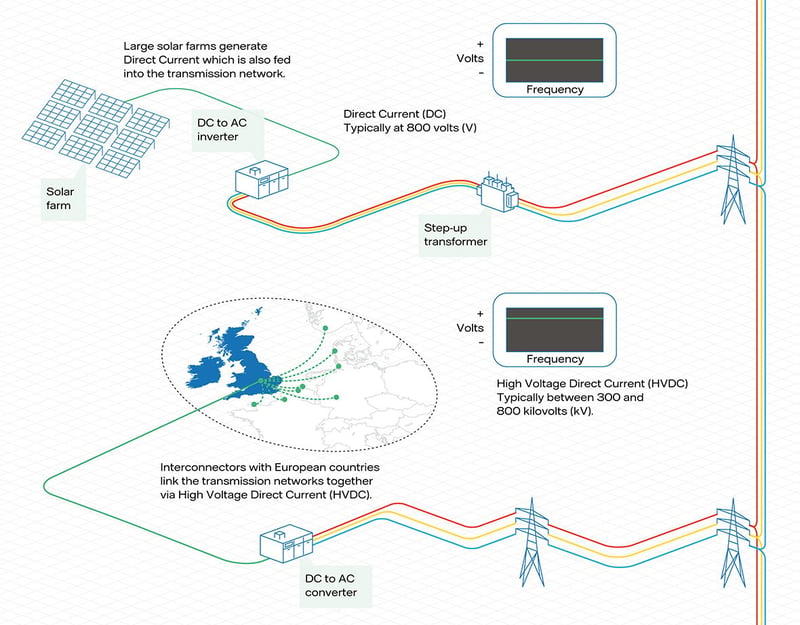
Distribution Networks
The UK’s distribution networks operate at High Voltage (HV), typically with distribution voltages of 11, 33 or 132 kilovolts (kV). Distribution networks are managed by Distribution Network Operators (DNOs) and Independent Distribution Network Operators (IDNOs). Read about the differences between DNOs and IDNOs.
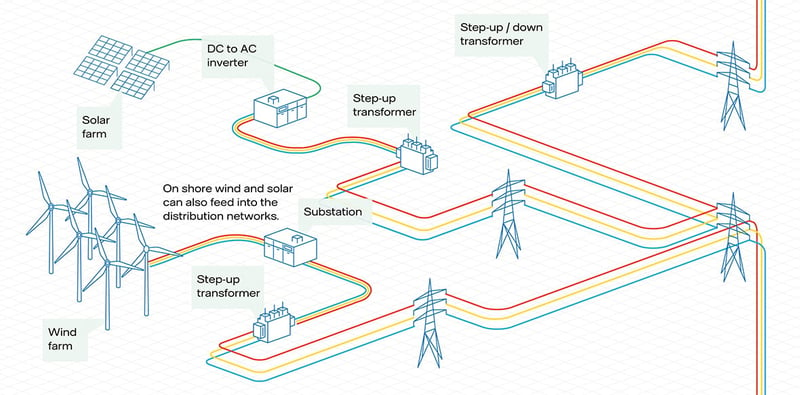
Electricity System Operator
The Electricity System Operator (ESO) balances supply and demand. They operate the system but are not responsible for the infrastructure.
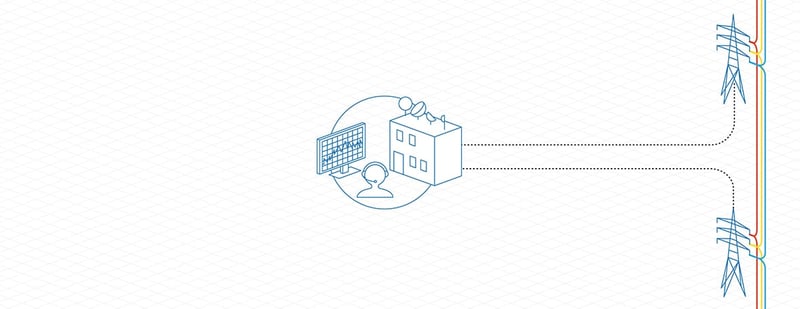
Private wire electricity
Private wire electricity networks are company-owned and distribute electricity around a site behind / below the meter. Large industrial / commercial premises generally receive 11 kilovolts (kV).
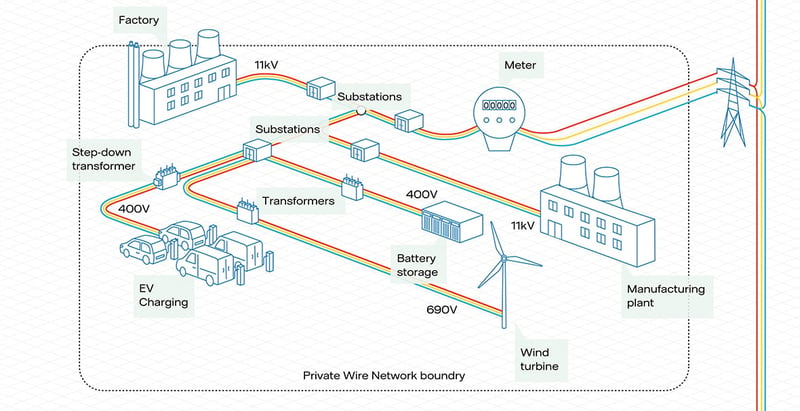
Consumer demand
Electricity is generally consumed at Low Voltages (LV) between 400 and 230 volts (V).
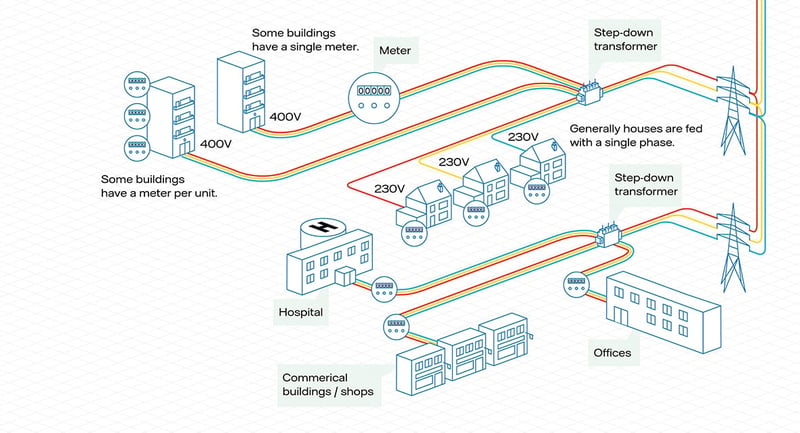
Download
Download a PDF of the full infographic explaining how the UK National Grid works
